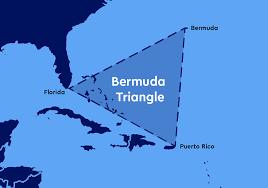The mystery of the ocean’s depths has fascinated humanity for centuries. While surface vessels have long explored the world’s seas, it is the submarine—an engineering marvel—that allows us to plunge into the deep and explore what lies beneath. But one of the most commonly asked questions about submarines is: How deep can a submarine go? The answer to this question is multifaceted, involving engineering limits, military secrecy, and the vast pressure of the ocean’s abyss. In this blog, we’ll explore the depth capabilities of submarines—military, research, and commercial—and what challenges they face as they descend into the watery depths.
Table of Contents
ToggleUnderstanding Depth: Pressure and the Ocean
Before diving into the specifics of submarines, it’s important to understand the environment in which they operate. Water pressure increases by approximately one atmosphere (14.7 psi) for every 10 meters (33 feet) of descent. At 1,000 meters (3,280 feet), a submarine is subjected to 100 times the atmospheric pressure we experience at sea level. This intense pressure is one of the biggest obstacles to deep-sea travel.
As pressure increases with depth, the structural integrity of the submarine becomes crucial. If the pressure hull is not strong enough, it could implode. This is why the maximum depth a submarine can reach—commonly referred to as “crush depth”—is a critical specification.
Types of Submarines and Their Depth Capacities
Submarines are not all built the same. Their depth capabilities vary depending on their purpose—military, research, or exploration.
1. Military Submarines
Military submarines are designed primarily for stealth, endurance, and survivability in combat situations. While exact details are often classified, there is some publicly known information about their capabilities.
-
U.S. Navy Submarines: The American Los Angeles-class nuclear submarines have a test depth of around 650–850 feet (200–260 meters), although some sources suggest they can dive much deeper. The newer Seawolf-class submarines are believed to have test depths exceeding 1,600 feet (approximately 500 meters). Their crush depth is estimated to be over 2,400 feet (730 meters).
-
Russian Submarines: The Russian Typhoon-class and Oscar-class submarines are known for their size and depth capabilities. The K-278 Komsomolets, a Soviet nuclear-powered attack submarine, holds the record for the deepest-diving military submarine, reaching a depth of 1,020 meters (3,350 feet) in 1985.
-
Chinese and Other Navies: While less is publicly known, modern submarines operated by China, the UK, and France are believed to have similar capabilities to those of the U.S. and Russia.
2. Research Submarines and Submersibles
Research submarines, or manned submersibles, are built to explore the deepest parts of the ocean for scientific purposes.
-
DSV Alvin: Operated by the United States, Alvin is a deep-submergence vehicle that has dived to depths over 4,500 meters (14,764 feet). It played a vital role in the exploration of hydrothermal vents and even visited the wreck of the Titanic.
-
Deepsea Challenger: This submersible was piloted by filmmaker James Cameron in 2012 to the Mariana Trench’s Challenger Deep, reaching a depth of about 10,908 meters (35,787 feet). This was a solo journey, showcasing the power of engineering and human ambition.
-
Trieste: In 1960, the bathyscaphe Trieste, piloted by Jacques Piccard and Don Walsh, became the first crewed vehicle to reach the bottom of the Mariana Trench—nearly 11,000 meters (36,000 feet) deep.
These vessels are not traditional submarines in the military sense but are specially designed for extreme pressure and are used primarily in deep-sea research.
Factors That Influence Submarine Depth
Several factors determine how deep a submarine can safely operate:
-
Hull Design and Material: The strength of the pressure hull, often made of high-grade steel or titanium, plays a critical role. Titanium is lighter and more resistant to corrosion but is expensive.
-
Purpose and Mission Requirements: A military submarine designed for stealth and speed may sacrifice some depth capabilities compared to a slower, more pressure-resistant research submersible.
-
Pressure Hull Shape: Spherical or rounded shapes handle pressure better than flat or angular structures. Many deep-sea submersibles adopt a sphere-like passenger compartment for this reason.
-
Technology and Budget: Advanced technology, often found in research submersibles, comes at a high cost. Funding and purpose significantly influence depth design.
Crush Depth vs. Operational Depth
It’s important to distinguish between test depth, operational depth, and crush depth:
-
Test Depth is the maximum depth at which a submarine is permitted to operate under normal peacetime conditions.
-
Operational Depth is generally slightly less than test depth and is the depth most missions will utilize.
-
Crush Depth is the depth at which the submarine’s hull will collapse due to pressure. This number is typically kept classified for military vessels.
Submarines rarely approach their crush depth. Doing so would put the crew and the vessel at enormous risk.
Future of Deep-Sea Submersion
With advancements in materials science, robotics, and autonomous navigation, future submarines—especially unmanned ones—are expected to reach even greater depths. Autonomous underwater vehicles (AUVs) and remotely operated vehicles (ROVs) are already exploring parts of the ocean no human could survive in.
Some private enterprises are also investing in luxury submarines and deep-sea tourism. Companies are designing submersibles that can take civilians thousands of feet below the surface in relative comfort.
Conclusion
Submarines, whether built for war or exploration, are a testament to human ingenuity. Their ability to resist the crushing forces of the deep ocean allows us to explore regions of Earth that remain more mysterious than outer space. Military submarines can generally dive to a few hundred meters, while research submersibles have reached the ocean’s deepest points. As technology advances, the depths submarines can safely reach will likely increase, pushing the boundaries of exploration and expanding our understanding of the hidden world beneath the waves.
